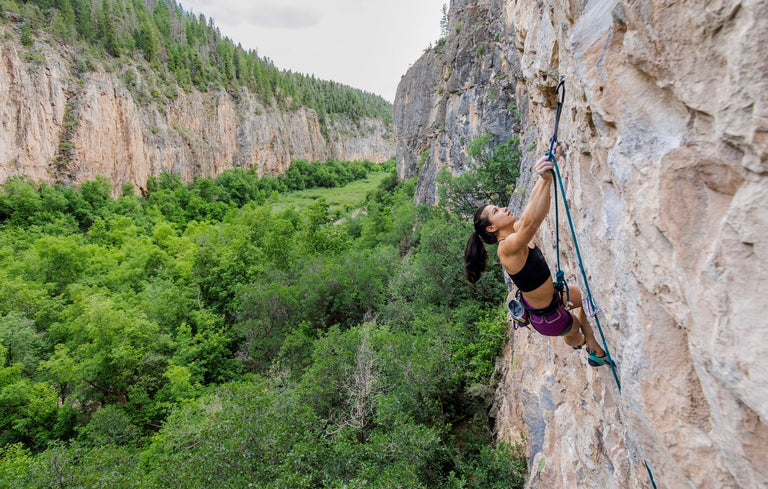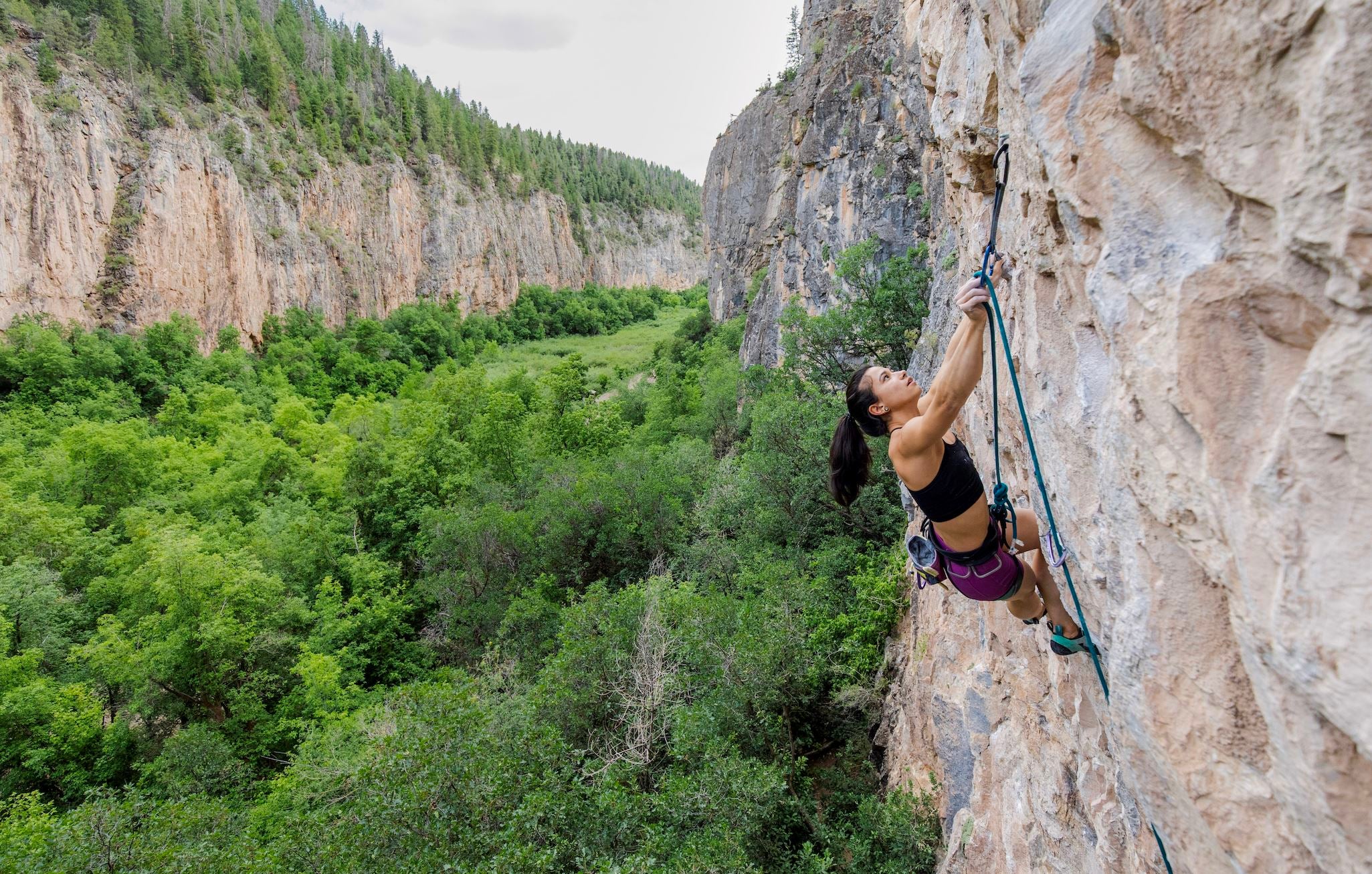In this workshop, Dominique Davis brings the principles and practices of yoga from the studio to the Crag, and learn how to incorporate them into our climbing routine. We will explore the benefits of mantra meditation to overcome self doubt and negative thoughts by creating our own personal one. You will have the opportunity to learn how to control and regulate your breathing through the practice of pranayama. Finally we will find our flow in a 45 minute climbing specific asana practice to help you float through the crux; focusing on hip mobility, shoulder stabilization, core strength, balance and flexibility.
In This Clinic
- Creating Your Own Mantra
- The Importance of Breath
- Chest or Belly Breather?
- A Breathing Exercise
- Vinyasa Flow
- Q/A
Creating Your Own Mantra
Creating a personal mantra tends to be really a powerful tool for getting rid of negative thoughts or the chatter of a gym. It can be anything, just something that you can repeat over to yourselves to get your head right before embarking on that climb or whatever you're setting out to accomplish.
Write something down that you know inspires you to think something positive about yourself or a positive affirmation in general. You don't have to share it with anybody this is for you.
The Importance of Breath
In yoga we put a lot of importance on breath. It's referred to as prana which is a universal energy that creates a bridge between body and mind. It is good skill to make sure you're centered in your practice and help you remain present because there's nothing more in the moment than an actual breath. Every inhale and every exhale keeps you really centered and focused in your practice.
Are you a chest or belly breather?
Place your right hand on your chest and your left hand on your belly and just breathe like you normally would. Notice which hand moves more or which hand rises more.
Chest breather:
Is your right hand moving more?
Chest breathing tends to be more inefficient because the greatest amount of blood flow occurs in the lower lobes of the lungs, and that area doesn't get as much expansion so you take in less oxygen when you are breathing through your chest. So those rapid, shallow chest breaths result in less oxygen transfer to the blood and poor delivery of nutrients to the tissue.
belly breather:
Is your left hand moving more?
The good news is that just like any other exercise you can train your body to take those more deep belly breaths, such as by doing the following breath exercise...
A Breathing Exercise
This exercise is called dirga. It's a three part breath, and it's used to maximize your inhalation and exhalation. The whole purpose of this breath is to gain control and correct poor breathing habits so it's really useful in situations where there's a lot of high stress or anger, and it's really good at calming your nerves.
- Get into like a comfortable position - whether you're seated in a chair or you're on your yoga mat.
- Cross your legs and softly close your eyes
- First inhale deeply into your belly, inhale through the nose and send the breath into your belly, allowing the belly to expand.
- Once you feel fully expanded there, let the breath rise into your rib cage and expand in all directions.
- Once the ribs are fully expanded, send the breath into your chest, up to the base of your neck
- At the end of your inhale, smoothly begin to exhale starting at the base of your neck and going all the way down into the base of the belly. You want to maintain a smooth breath, consistent in length and depth on the inhale.
Vinyasa Flow
This flow focuses on a lot of hip opening, shoulder opening, and core engagement. These tend to be the areas that climbers use the most during a climb. The below video is the same as the one at the top of this post, but it starts at 16:28, which is when the yoga begins.
https://www.youtube.com/watch?v=fvLr7ADb-v4Q/A
does your personal mantra change based upon the activity?
Generally yes, because there's different feelings that come up depending on what I'm doing. With climbing, it's typically a lack of capability or strength, and that varies depending on if I'm teaching a yoga class, or teaching a clinic, then there's other feelings and self-doubt that come up. So I tend to tailor that mantra to the feelings that arise that are creating that doubt and negative self-talk to counteract those.
best chest opening and shoulder stretching poses?
If you have yoga blocks or books, stack them up to a height, depending on how open or flexible your chest is. Place your elbows on the blocks/books and then just try to get your forehead down to the mat. It really opens up your shoulders and your chest. The dolphin pose is also really good for chest and shoulder opening.
what parts of the body are most important to focus on for climbing mobility?
Make sure your hips and hamstrings are really open. Shoulder flexibility is key as well.
what do you think is the most important part of your yoga practice that helps with your climbing?
I would have to say my breathing practice, making sure that I am breathing with each movement when I'm climbing. If you're holding your breath while you're climbing, it makes it a great deal harder, so being really intentional about my breath and making sure that I am breathing with my movements and just being able to stay in the moment and stay focused helps. Also just the mindfulness that yoga has brought me has helped a lot with my climbing and to turn off that constant mental chatter.



